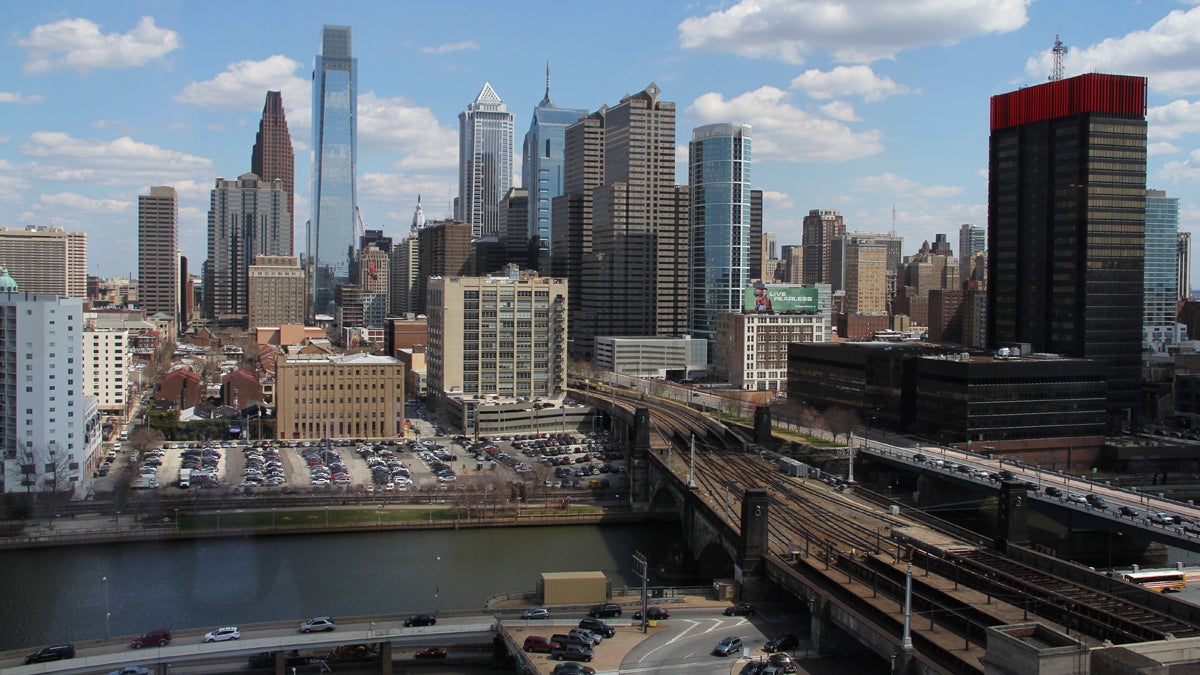Where’s the worst place to live if you have asthma?

Philadelphia's skyline seen from across the Schuylkill Expressway. (Emma Lee/WHYY)
Memphis tops the list, but this year Philadelphia is No. 3 — and Allentown is No. 19 — among the places where it’s challenging to live if you have asthma.
The report from the Asthma and Allergy Foundation of America considers factors such as air quality, the pollen count, and the percentage of people living in poverty to come up with the ranking.
The city list incorporates medicine-use trends for an entire city over the year. Michael Tringale, a foundation senior vice president, says the overuse of certain medicines is another indication that asthma is out of control.
“Rescue — and quick relief inhalers — are only supposed to be used three or fewer times a week. But what we find is that a lot of patients are using that rescue inhaler once or twice a day,” Tringale said.
The ranking also tracks each city’s death rate from asthma.
“In Philadelphia, it’s considered relatively high. In Allentown, it’s considered relatively low,” Tringale said.
While air quality and pollen levels in Philadelphia and Allentown are about the same, the percentage of asthma deaths is above average in Philadelphia.
You probably can’t pick up and move if you live in one of the “asthma capitals” but Tringale said patients, doctors and policymakers can use the information wherever they are.
The foundation encourages those with asthma to be aware of what can affect their quality of life, to pay attention to health polices and to advocate for change.
The foundation’s ranking includes only the biggest cities in the United States, but other research shows that asthma is a big problem well beyond urban centers.
Allergist Corinne Keet and her team at the Johns Hopkins Children’s Center have published a study that is helping to dispel the “urban asthma myth.” The Hopkins team reviewed national data on the areas of the United States with the highest rates of kids with asthma.
The higher percentage of kids with asthma in cities may be explained by demographic factors such as race and ethnicity, not only that they live in an urban neighborhood.
“As pockets of poverty in suburban areas are growing, I think we need to really make sure that we are ensuring that children who may be more isolated in suburban areas have access to care,” Keet said.
Because of transportation issues, children with asthma in the suburbs, for example, may not get to see a specialist as often as they need to, Keet said.
It’s not clear why some children develop asthma and some don’t. But health experts say a wealth of information on how to manage the disease to prevent it from becoming an everyday problem is available.
“In general, most children should not have to go to the emergency room or be hospitalized for asthma,” Keet said.
Dust mites, mold, pollen, cockroaches and pet dander can trigger asthma attacks. Pollution, tobacco smoke and woodfire smoke are also irritants.
WHYY is your source for fact-based, in-depth journalism and information. As a nonprofit organization, we rely on financial support from readers like you. Please give today.

